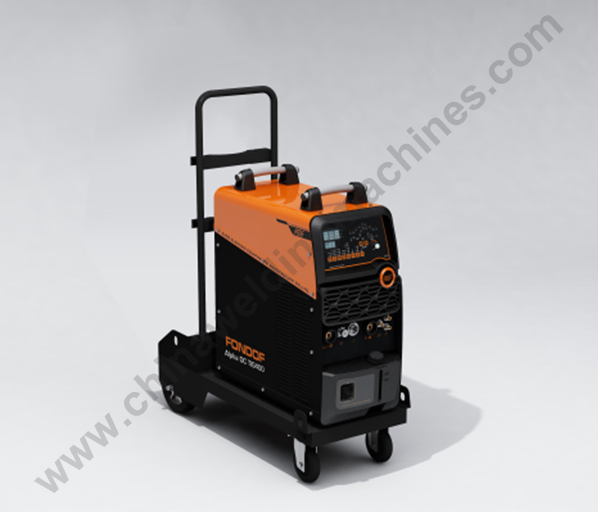What are different types of welding machines?
Welding machines play a vital role in various industries by joining materials together through the application of heat and pressure. Different types of welding machines are designed to accommodate specific welding processes and applications. In this article, we'll delve into some of the most common types of welding machines, highlighting their characteristics and applications.

Arc Welding Machines
Description: Arc welding machines, also known as stick welders or shielded metal arc welders (SMAW), utilize an electric arc between an electrode and the workpiece to create a weld.
Applications: Arc welding is versatile and suitable for a wide range of materials, making it a common choice for construction, fabrication, and maintenance work.
MIG Welding Machines
Description: MIG (Metal Inert Gas) welding machines use a continuously fed wire electrode and a shielding gas to create a weld.
Applications: MIG welding is commonly used in automotive, manufacturing, and metalworking industries due to its high speed and ease of use.
TIG Welding Machines
Description: TIG (Tungsten Inert Gas) welding machines employ a tungsten electrode to produce a weld with a separate filler material, if needed. The weld area is shielded by an inert gas.
Applications: TIG welding is ideal for precise and high-quality welds on thin materials, making it suitable for aerospace, automotive, and artistic applications.
Plasma Arc Welding Machines
Description: Plasma arc welding machines utilize a high-velocity plasma arc to melt the workpiece and create a weld.
Applications: Plasma arc welding is used for precision welding on materials like stainless steel, aluminum, and copper, often in industries such as aerospace and electronics.
Submerged Arc Welding Machines
Description: Submerged arc welding machines involve feeding a continuous electrode and flux under a layer of granular flux to create a submerged arc.
Applications: Submerged arc welding is efficient for joining thick materials and is commonly used in shipbuilding, structural steel fabrication, and pressure vessel manufacturing.
Resistance Welding Machines
Description: Resistance welding machines use electrical resistance and pressure to create a weld between two pieces of metal.
Applications: Resistance welding is used for spot welding, seam welding, and projection welding in industries like automotive, electronics, and appliance manufacturing.
Laser Welding Machines
Description: Laser welding machines focus a high-energy laser beam on the workpiece to melt and fuse the materials.
Applications: Laser welding is suitable for precise and intricate welding tasks in industries such as medical device manufacturing, jewelry making, and electronics.
Electron Beam Welding Machines
Description: Electron beam welding machines generate a concentrated beam of electrons to create a weld with deep penetration.
Applications: Electron beam welding is used for joining materials with high melting points, such as aerospace components, and for producing precise welds in challenging environments.
Friction Welding Machines
Description: Friction welding machines create a weld by generating heat through friction between two workpieces.
Applications: Friction welding is employed in industries like automotive, aerospace, and energy production, particularly for joining dissimilar materials.
Ultrasonic Welding Machines
Description: Ultrasonic welding machines use high-frequency vibrations to create friction and heat at the joint, fusing the materials together.
Applications: Ultrasonic welding is common in industries such as plastics manufacturing, electronics assembly, and medical device production.
Conclusion
Different types of welding machines cater to diverse welding processes and applications, each offering unique benefits and advantages. The choice of welding machine depends on factors such as material type, joint design, required quality, and production volume. By understanding the characteristics of various welding machines, you can make informed decisions to ensure efficient and effective welding processes in your projects.
138
0
0


Comments
All Comments (0)